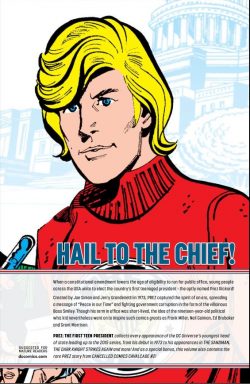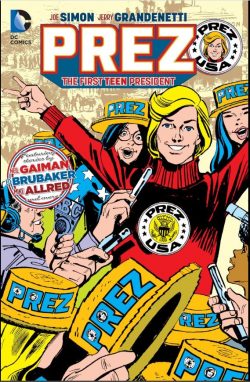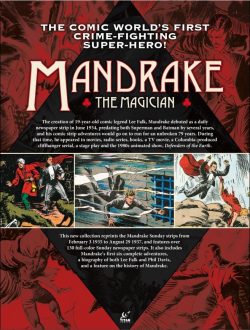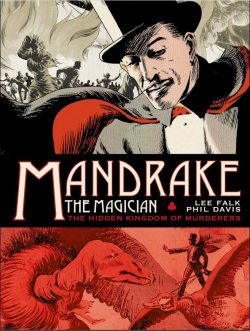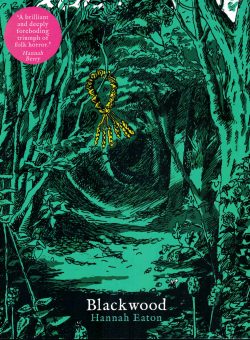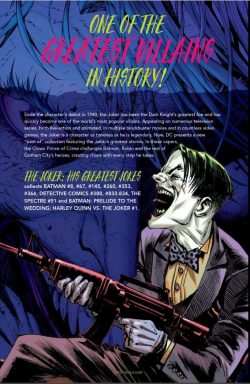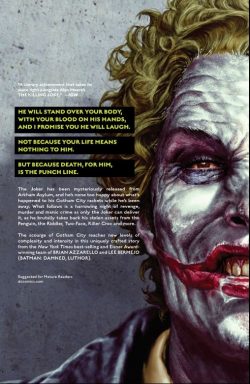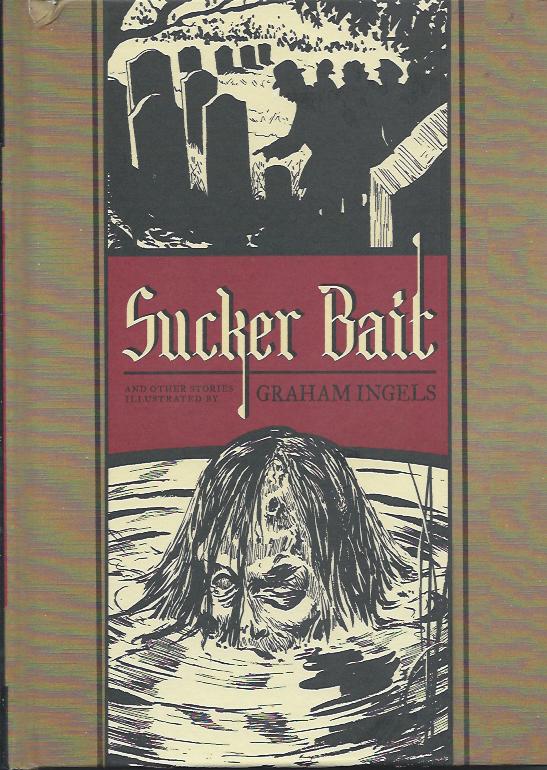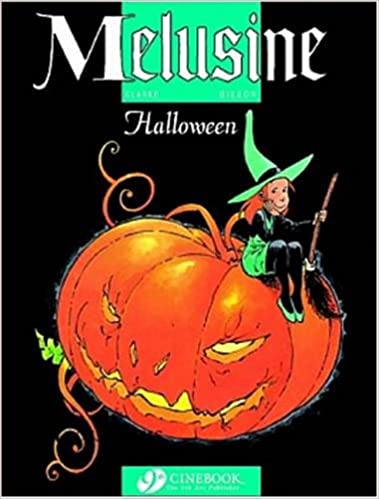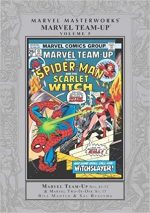

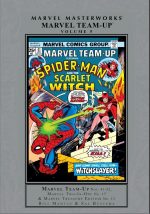
By Bill Mantlo, Gerry Conway, Roger Stern, Sal Buscema, Ron Wilson, George Tuska & various (Marvel)
ISBN: 978-1-3029-2218-4 (HB)
Win’s Christmas Gift Recommendation: Simply Superb Merry Marvel Madness … 8/10
In the 1970s, Marvel grew to dominate the comic book market despite losing their two most innovative and inspirational creators. They did so less by experimentation and more by expanding proven concepts and properties. The only real exception to this was the mass creation of horror titles in response to the industry down-turn in super-hero sales – a move expedited by a rapid revision in the wordings of the increasingly ineffectual Comics Code Authority rules.
The concept of team-up books was not new when Marvel awarded their most popular hero the lion’s share of this new title, but they wisely left their options open by allocating an occasional substitute lead in the Human Torch. In those long-lost days, editors were acutely conscious of potential over-exposure – and since super-heroes were actually in a decline at that time, they may well have been right.
Nevertheless, after abortive companion title Spectacular Spider-Man (created for the magazine market in 1968) died after two issues, Marvel Team-Up was the second full Spider-Man title. Debuting in March 1972, it was a resounding hit.
This fifth fabulous compilation (in hardback and digital formats) gathers material from MTU #41-52, plus a crossover from Marvel Two-in-One #17, and a rare seasonal sage from tabloid rarity Marvel Treasury Edition #13, cumulatively spanning January-December 1976. The book opens with an informative assessment and appreciation from historian and archivist Bruce Canwell in his Introduction before we plunge into the many-starred dramas…
A major attraction of those early comics combos was an earnest desire to get things “done in oneâ€, with tales that concentrated on plot and resolution with the guest du jour. Here, however, neophyte scripter Bill Mantlo begins an era of closer continuity with an extended time travel epic that took taking the wallcrawler to the farthest, weirdest corners of Marvel’s ever-expanding universe…
With artists Sal Buscema & Mike Esposito in control of the horizontal and vertical, a truly impressive and ambitious multi-part epic opens with the Amazing Arachnid visiting the past and a number of alternate tomorrows beginning with ‘A Witch in Time!’
Here mutant Avenger Scarlet Witch is abducted from her rightful time and place by infamous witch-hunter Cotton Matherwho uses Doctor Doom‘s time machine to drag her back to Salem, Massachusetts in 1692. Her plight is observed by Spider-Man who naturally follows, but after failing to save her, the webspinner is himself accused of infernal sorcery in that rabid Massachusetts township…
Whilst Mather fans hysterical flames of paranoia, the Avenger’s synthezoid husband time-travels to her side in #42’s ‘Visions of Hate!’, only to fall before the witchfinder’s mysterious power too. As the innocents of Salem prepare themselves for death, our heroes make their escape only to fall to Mather’s hitherto unseen benefactor The Dark Rider.
Just as the master manipulator reveals himself, however, the stakes change again when a severely affronted Victor Von Doom appears, angrily demanding to know who’s been playing with his toys in #43’s ‘A Past Gone Mad!’
The frantic battle against an immortal chronal predator seems predestined to fail until the time-tides are unexpectedly turned in MTU #44 with the last-minute arrival of mind-goddess Moondragon, but in the aftermath Spider-Man tragically discovers that history is well-nigh impossible to alter in ‘Death in the Year Before Yesterday!’
The arachnoid adventurer is the last to return to the 20th century but his departure in issue #45 results in deadly diversions and understandable ‘Future-Shock!’ as he overshoots his home time and lands in devastated (and now defined as an alternate future) New York City circa 2019 where Warrior of the Worlds Killraven helps him survive numerous attacks by mutants and Martians in terrifying tripods before sending the spider back on his way home..
Unfortunately, before he gets there the wallcrawler experiences another shocking stopover in ‘Am I Now or Have I Ever Been?’, with cyborg warrior Deathlok saving him from a mutant hive-mind in a Manhattan shattered by war a mere fifteen years after his own lost and longed-for era…
A scared, sad and sobered Spider-Man finally makes it home in Marvel Two-In-One #17 just in time for a crossover with Ben Grimm AKA the Thing. The blockbuster opens with ‘This City… Afire!’ by Mantlo, Sal B & Esposito where, after battling beside Ka-Zar in the dinosaur paradise of the Savage Land, big Ben is ignominiously returned to the Big Apple by mutated madman Basilisk. This manic malcontent has manifested an erupting volcano in the Hudson River and it needs to go…
Already reeling, Spidey swings into action for the cataclysmic conclusion in Marvel Team-Up #47 where Mantlo, Ron Wilson & Dan Adkins render the spectacular clash of heroes who boldly proclaim ‘I Have to Fight the Basilisk!’
Proving there’s no rest for the wicked or the righteous, MTU #48 begins another suspenseful extended saga when ‘Enter: the Wraith!’ (Mantlo, Sal B & Esposito) introduces Police Captain Jean DeWolff whilst Spidey and Iron Man struggle to stop a mad bomber using model planes to destroy city landmarks and Stark International properties. As the heroes fruitlessly pursue leads, the enigmatic Wraith turns his attention upon them, proving to be not only connected to Jean but some kind of psionic metahuman…
With Iron Man again the guest-star, issue #49 reveals that ‘Madness is All in the Mind!’ as the masked maniac resumes his irresistible psychic assaults: explosively attacking Manhattan even as the tragic story of Jean’s Police Commissioner dad and murdered cop brother comes out…
However, the connection between them and the unstoppable villain is only exposed after the webslinger and Golden Avenger recruit Master of Mystic Arts Doctor Strange who applies his unique gifts to the problem in #50’s ‘The Mystery of the Wraith!’
The saga concludes with Marvel Team-Up #51 and ‘The Trial of the Wraith!’: a legal confrontation steered by a most unusual panel of judges whose hidden abilities are not enough to prevent one last crack of the whip by the unrepentant renegade…
The thrills, spills and chills are followed with blatant fill-in ‘Danger: Demon on a Rampage!’: a rather rushed but action-heavy pairing of Spidey and Captain America from Gerry Conway, SB & Esposito which sees the heroes unite to take down Gallic mercenary Batroc and an enraged monster that has somehow slipped out of an adjacent dimension…
The bulging bonus section begins with a house ad for the Mighty Marvel Bicentennial Calendar of 1976 which follows in its entirety, featuring the artistic excellence of John Romita Sr, Frank Robbins & Frank Giacoia, Herb Trimpe, Bob Brown, Gil Kane, John Buscema, Ross Andru, Joe Sinnott, Sal Buscema, Frank Brunner, Jim Starlin & Alan Weiss, and Jim Mooney.
After original art and covers from the text of this collection, Gil Kane’s sketches and finished art for the covers and frontispieces of Marvel Treasury Edition #9 (Giant Superhero Team-Up) and Marvel Treasury Edition #13 (Giant Superhero Holiday Grab-Bag) precede a delightful lost gem from the latter: an all-new clash between the Fantastic Four and Avengers by Roger Stern, George Tuska & Don Perlin. Thankfully, as the battle – with snowballs in Central Park – escalates, Daredevil, the Defenders and Champions are on hand to maintain the proper seasonal spirit…
These stories all have an honest drive to entertain and most fans of the genre would find little to complain about. Although not really a book for casual or more maturely-oriented enthusiasts, there’s plenty of fun on hand here and younger readers will have a blast, so there’s no reason not to add this tome to your comics library…
© MARVEL 2020 Marvel.

